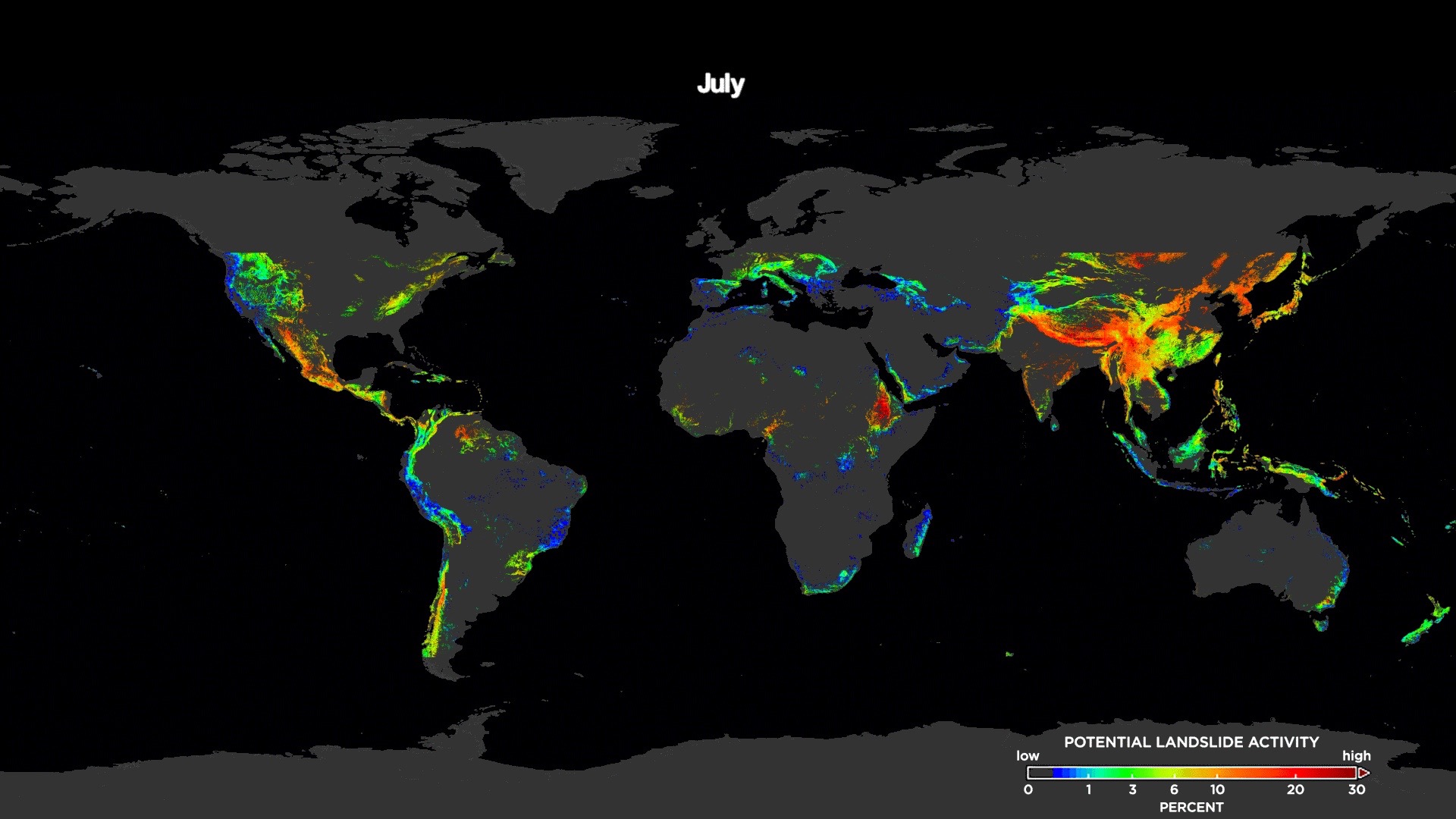New NASA Model Could Help Predict Landslides (Video)
Landslides may have just gotten a little more predictable — and a little less deadly.
A new NASA computer model identifies landslide hazards around the world every 30 minutes, potentially allowing scientists and first responders to get a jump on these natural disasters, a new study reports.
"Landslides can cause widespread destruction and fatalities, but we really don’t have a complete sense of where and when landslides may be happening to inform disaster response and mitigation," study lead author Dalia Kirschbaum, a landslide expert at NASA's Goddard Space Flight Center in Greenbelt, Maryland, said in a statement.

"This model helps pinpoint the time, location and severity of potential landslide hazards in near real-time all over the globe," Kirschbaum added. "Nothing has been done like this before."
Heavy, sustained rainfall is a key trigger of landslides around the globe. So Kirschbaum and co-author Thomas Stanley, a landslide expert with the Universities Space Research Association at NASA Goddard, built the new model using rainfall data gathered by the Global Precipitation Measurement satellite mission, which is run jointly by NASA and the Japan Aerospace Exploration Agency.
The model also employs a "susceptibility map" to determine if areas getting hammered by rain are particularly landslide-prone — for example, if they lie on or near steep slopes and/or tectonic-plate boundaries, or have been subject to significant deforestation.
High-risk areas are identified in "nowcasts," which the new open-source model produces every 30 minutes.
Get the Space.com Newsletter
Breaking space news, the latest updates on rocket launches, skywatching events and more!
"The model has been able to help us understand immediate potential landslide hazards in a matter of minutes," Stanley said in the same statement. "It also can be used to retroactively look at how potential landslide activity varies on the global scale seasonally, annually or even on decadal scales in a way that hasn't been possible before."
The new study was published online Thursday (March 22) in the journal Earth's Future.
Follow Mike Wall on Twitter @michaeldwall and Google+. Follow us @Spacedotcom, Facebook or Google+. Originally published on Space.com.
Join our Space Forums to keep talking space on the latest missions, night sky and more! And if you have a news tip, correction or comment, let us know at: community@space.com.

Michael Wall is a Senior Space Writer with Space.com and joined the team in 2010. He primarily covers exoplanets, spaceflight and military space, but has been known to dabble in the space art beat. His book about the search for alien life, "Out There," was published on Nov. 13, 2018. Before becoming a science writer, Michael worked as a herpetologist and wildlife biologist. He has a Ph.D. in evolutionary biology from the University of Sydney, Australia, a bachelor's degree from the University of Arizona, and a graduate certificate in science writing from the University of California, Santa Cruz. To find out what his latest project is, you can follow Michael on Twitter.









